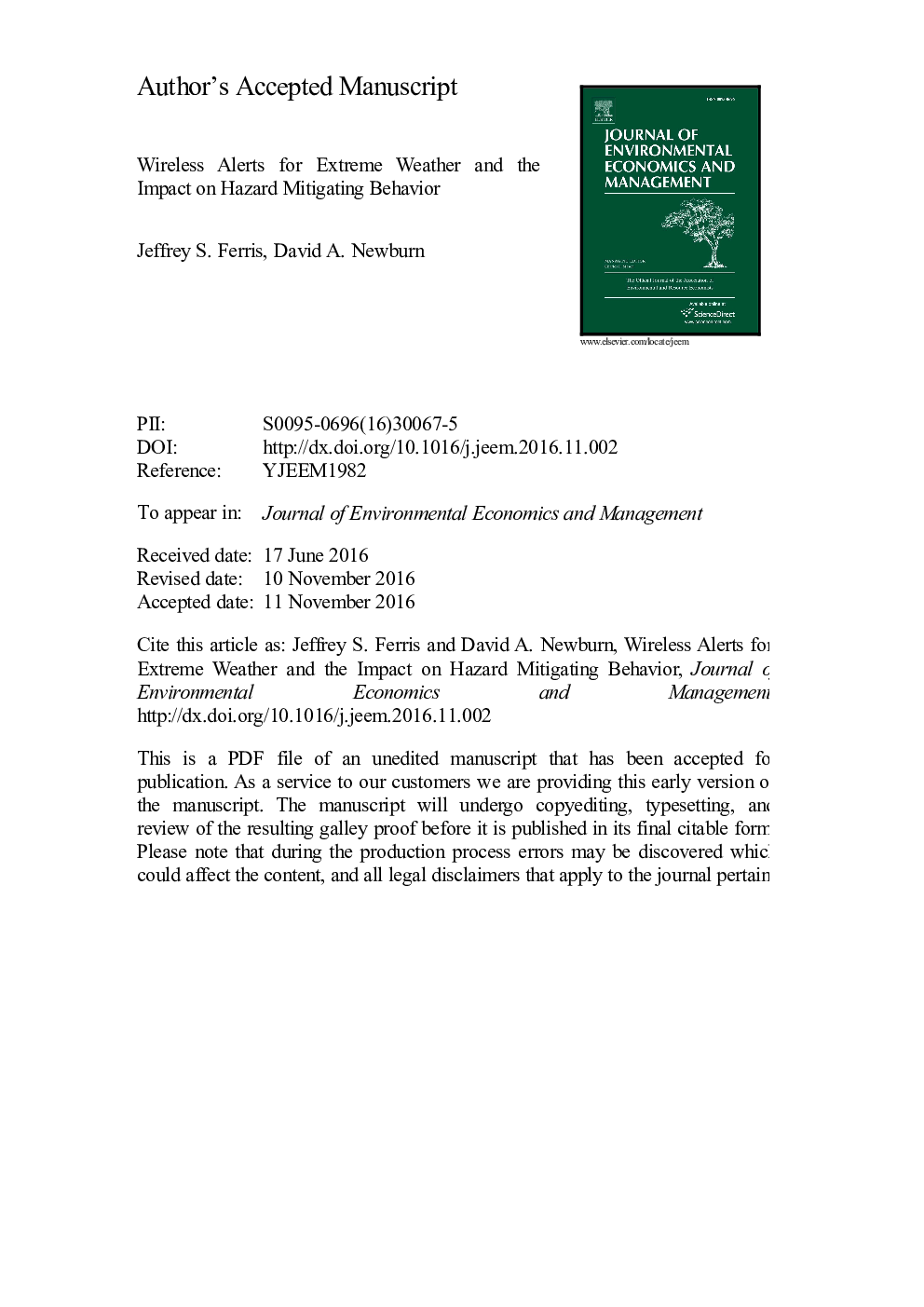| Article ID | Journal | Published Year | Pages | File Type |
|---|---|---|---|---|
| 5100435 | Journal of Environmental Economics and Management | 2017 | 82 Pages |
Abstract
Wireless alerts delivered through mobile phones are a recent innovation in regulatory efforts toward preparation for extreme weather events including flash floods. In this article, we use difference-in-differences models of the number of car accidents from days with government issued alerts for flash flood events in Virginia. We find that wireless alert messages for flash flood warnings reduced car accidents by 15.9% relative to the counterfactual with non-wireless alert protocols. We also use a regression discontinuity model to analyze hourly traffic volume data immediately before and after a flash flood warning message is issued. We find that traffic volume is reduced by 3.1% immediately following the issuance of a wireless alert relative to before the alert. These results imply that wireless alert messages effectively reduce exposure to hazards associated with extreme weather.
Related Topics
Social Sciences and Humanities
Economics, Econometrics and Finance
Economics and Econometrics
Authors
Jeffrey S. Ferris, David A. Newburn,
